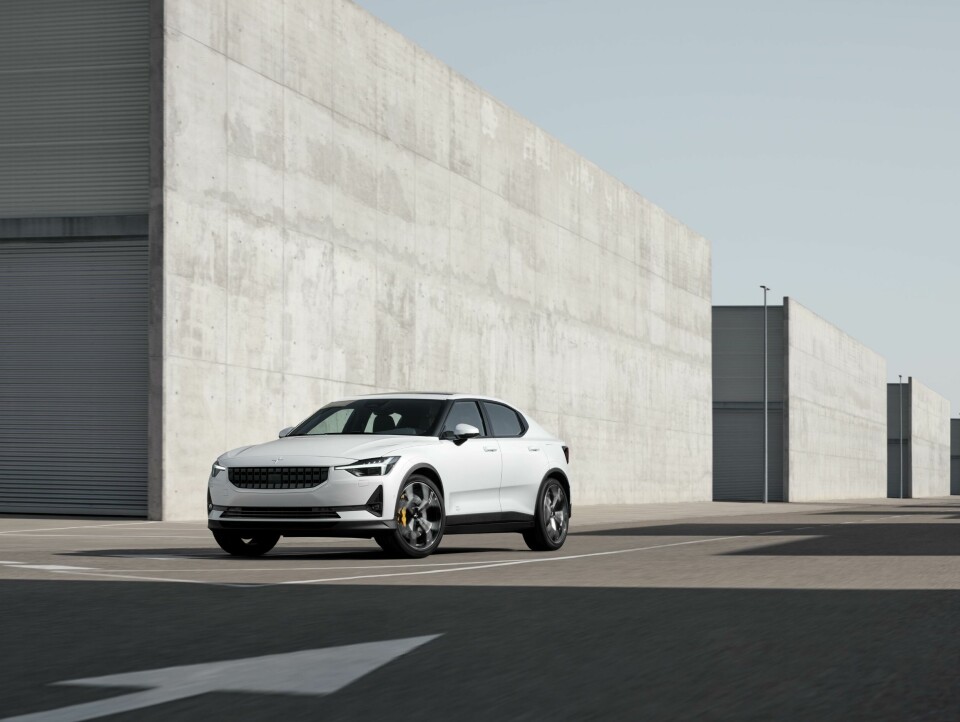
Polestar 2 revealed online
Polestar 2 launch reveals a stylish, modern, performance electric car
Thomas Ingenlath launched the Polestar 2 online today from the Polestar HQ in Gothenburg sporting a golden coloured jacket, another nod to the brand’s accent colour. The launch revealed interesting details about the colour and materials choices and the engineering that informed the car.
Polestar 1 sat in supercar territory and demonstrated the first iteration of the brand. Polestar 2, the second in the trilogy, is an interesting evolution of that aesthetic and is the first volume model from the brand.
The shape of the five-door fastback Polestar 2 is pretty butch for such a compact car – it is an unusual shape, neither hatchback nor sedan. Elements of the exterior design are clearly inspired more by product design than traditional automotive references – the door handles are a good example of this. The frameless door mirrors are becoming a Polestar signature, and, although they must have been an engineering challenge, have made it on to the car, not least because they reduce drag improve the aerodynamic properties.
Lots of design choices for Polestar 2 seem to have been informed, even led, by performance and engineering considerations. Reducing weight (to increase range) has ushered in vegan materials and frameless mirrors, and the increased weight of the batteries has stimulated the attractive proportions and stance.
Inside, the 11-inch screen is also frameless, Polestar has dispensed with the clunky contextualising of the screen with a frame, colour choices have been pared back, traditional materials, where used, have been treated in a way that gives them a distinctly modern edge. It is quite a radical little car, right down to the neoprene scuba-gear inspired material.
With the re-shaping of the relationship with the customer, radically redesigning the retail process, the online reveal, you could be forgiven to thinking the car was the least relevant part of this launch. But this is a brand headed by one of design’s most thoughtful and creative people who guided Volvo’s design renaissance in recent years. Polestar 2 does not disappoint.
So, how much of it is Volvo and how much is new? It seems to be an honest evolution of the Volvo approach but an original Polestar vehicle, no version of this will follow from Volvo. The Thor’s hammer headlamps which started with the Volvo models have been subtly evolved. On the rear of Polestar 2 the lamps join horizontally, where Volvo’s remain vertical and, according to Max Missoni, as the Polestar brand expands, the headlights will evolve with every iteration.
Volvos and Polestars share the Compact Modular Architecture and a sound emphasis on safety, but these are not simply electric Volvos. The Volvo Concept 40.2 from 2016 has been developed into a strikingly modern and connected vehicle for Polestar. As Thomas Ingenlath stated in the online reveal, when the original concept was made, it was wonderful, but simply didn’t fit in, it was not mainstream, “Luckily we just had invented a brand where things that do not fit the conventional will find their home, Polestar. So this great, awesome design became our Polestar 2.”
With this car restrictions have been turned, by design, into advantages. The extra weight added by batteries for this electric vehicle have encouraged great proportions and stance. Not just to make it look good, but also because the engineering requires it. Polestar 2 has the typology of an SUV without being and SUV, like big wheels, the cladding, a high seating position, plus a sleeker more aerodynamic silhouette and lower centre of gravity, too.
The modern approach to the exterior design has fed right through to the customer experience. Polestar’s HQ and retail Spaces have been as meticulously designed as the cars, the recently opened Polestar manufacturing facility in Chengdu, China was designed by Snøhetta. Polestar 2 is keyless, allowing car sharing, and will be available on a subscription model directly from Polestar. Google services are embedded in the new HMI system, and the colour palette in the HMI matches the colour palette for the cars.
Attention to the details is everywhere; the HMI screen brightens when the driver’s weight is detected by seat sensors, for example. Thomas Ingenlath told CDN: ““What is really joyful about the brand Polestar to me is that you can dare and try to do things where the convention tells you that’s not how to do something. Here we have the freedom to try things differently.”
And they have.
We will feature more about Polestar 2 after the Geneva debut.



